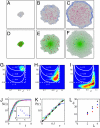On the mechanism of wing size determination in fly development
- PMID: 17360439
- PMCID: PMC1820670
- DOI: 10.1073/pnas.0607134104
On the mechanism of wing size determination in fly development
Abstract
A fundamental and unresolved problem in animal development is the question of how a growing tissue knows when it has achieved its correct final size. A widely held view suggests that this process is controlled by morphogen gradients, which adapt to tissue size and become flatter as tissue grows, leading eventually to growth arrest. Here, we present evidence that the decapentaplegic (Dpp) morphogen distribution in the developing Drosophila wing imaginal disk does not adapt to disk size. We measure the distribution of a functional Dpp-GFP transgene and the Dpp signal transduced by phospho-Mad and show that the characteristic length scale of the Dpp profile remains approximately constant during growth. This finding suggests an alternative scenario of size determination, where disk size is determined relative to the fixed morphogen distribution by a certain threshold level of morphogen required for growth. We propose that when disk boundary reaches the threshold the arrest of cell proliferation throughout the disk is induced by mechanical stress in the tissue. Mechanical stress is expected to arise from the nonuniformity of morphogen distribution that drives growth. This stress, through a negative feedback on growth, can compensate for the nonuniformity of morphogen, achieving uniform growth with the rate that vanishes when disk boundary reaches the threshold. The mechanism is demonstrated through computer simulations of a tissue growth model that identifies the key assumptions and testable predictions. This analysis provides an alternative hypothesis for the size determination process. Novel experimental approaches will be needed to test this model.
Conflict of interest statement
The authors declare no conflict of interest.
Figures






References
-
- Lawrence PA, Struhl G. Cell. 1996;85:951–961. - PubMed
-
- Gurdon JB, Dyson S, St Johnston D. Cell. 1998;95:159–162. - PubMed
-
- Gurdon JB, Bourillot PY. Nature. 2001;413:797–803. - PubMed
-
- Held LIJ. Imaginal Discs: The Genetic and Cellular Logic of Pattern Formation. Cambridge, UK: Cambridge Univ Press; 2002.
-
- Ashe HL, Briscoe J. Development (Cambridge, UK) 2006;133:385–394. - PubMed
Publication types
MeSH terms
Substances
Grants and funding
LinkOut - more resources
Full Text Sources
Other Literature Sources
Molecular Biology Databases

